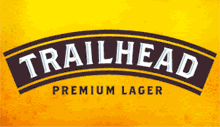 When you can't get out to ride during the winter, your body can get out of shape quickly. Fitness and mountain biking go hand in hand. Check out these 3 resources to help you reach your goals, whether it's getting in shape or making it to the top of Copeland Forest's mile high bike trail with no breaks.
When you can't get out to ride during the winter, your body can get out of shape quickly. Fitness and mountain biking go hand in hand. Check out these 3 resources to help you reach your goals, whether it's getting in shape or making it to the top of Copeland Forest's mile high bike trail with no breaks.1. Raw Crossfit CrossFit is the principal strength and conditioning program for many police academies and tactical operations teams, military special operations units, champion martial artists, and hundreds of other elite and professional athletes worldwide.
2. bikejames.com A two day, strength training program for mountain bikers from MTB Strength Training System creator James Wilson. A serious mountain bike strength training program.
3. Insanity No No Gym, No Problem The hardest workout program ever put on DVD, no gym required.

























